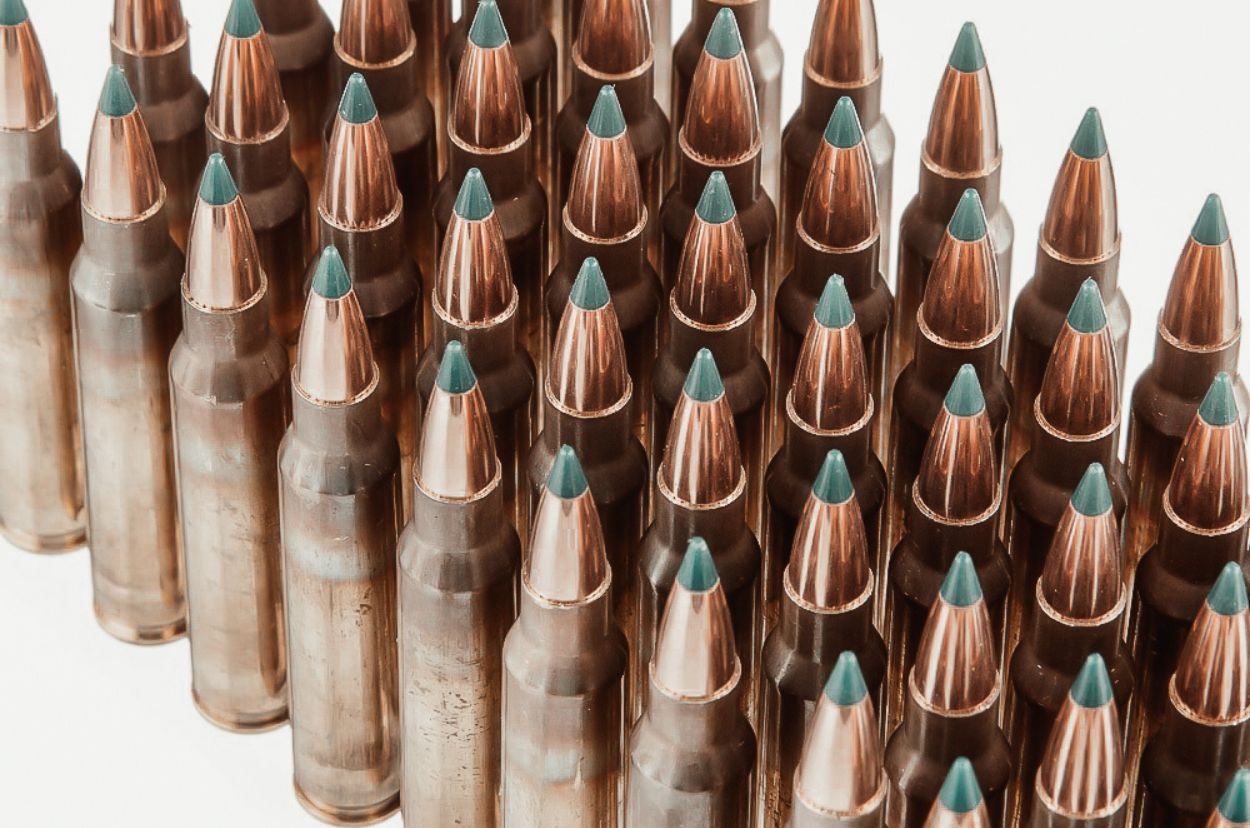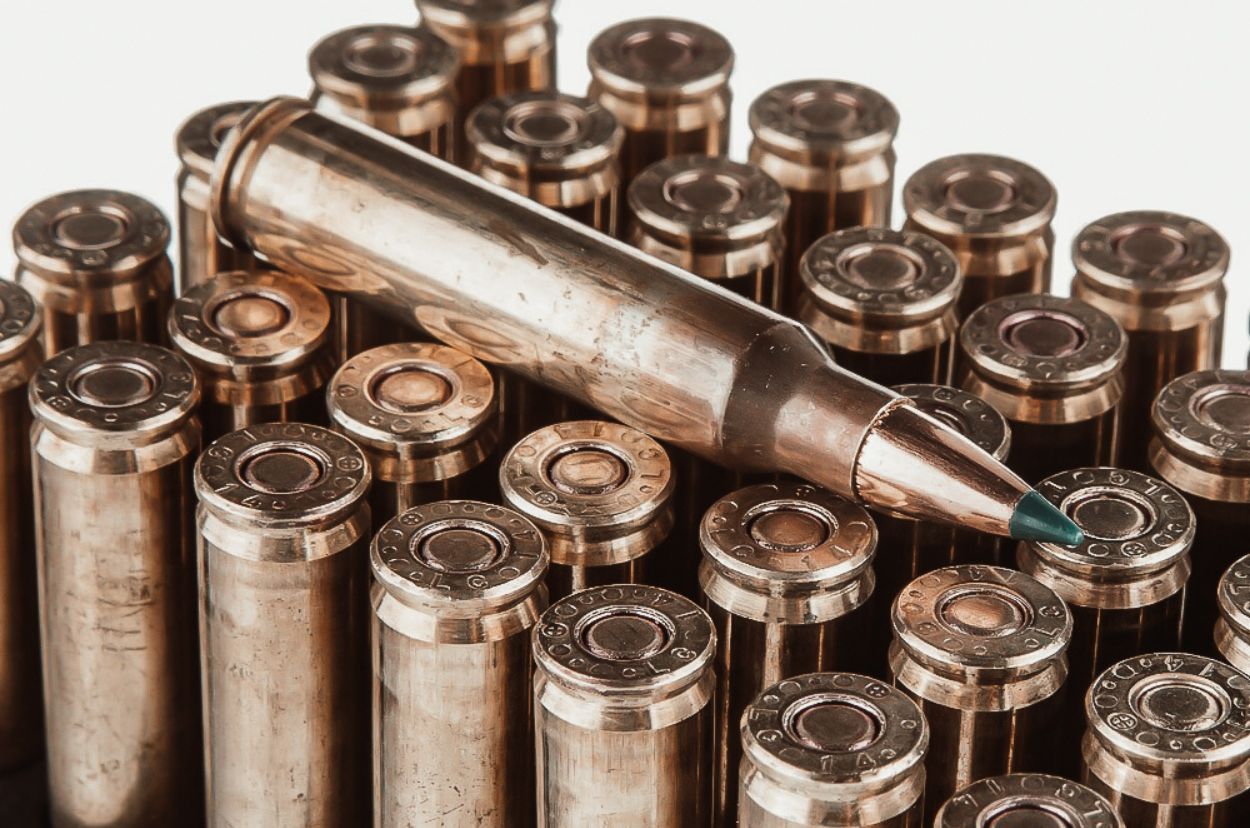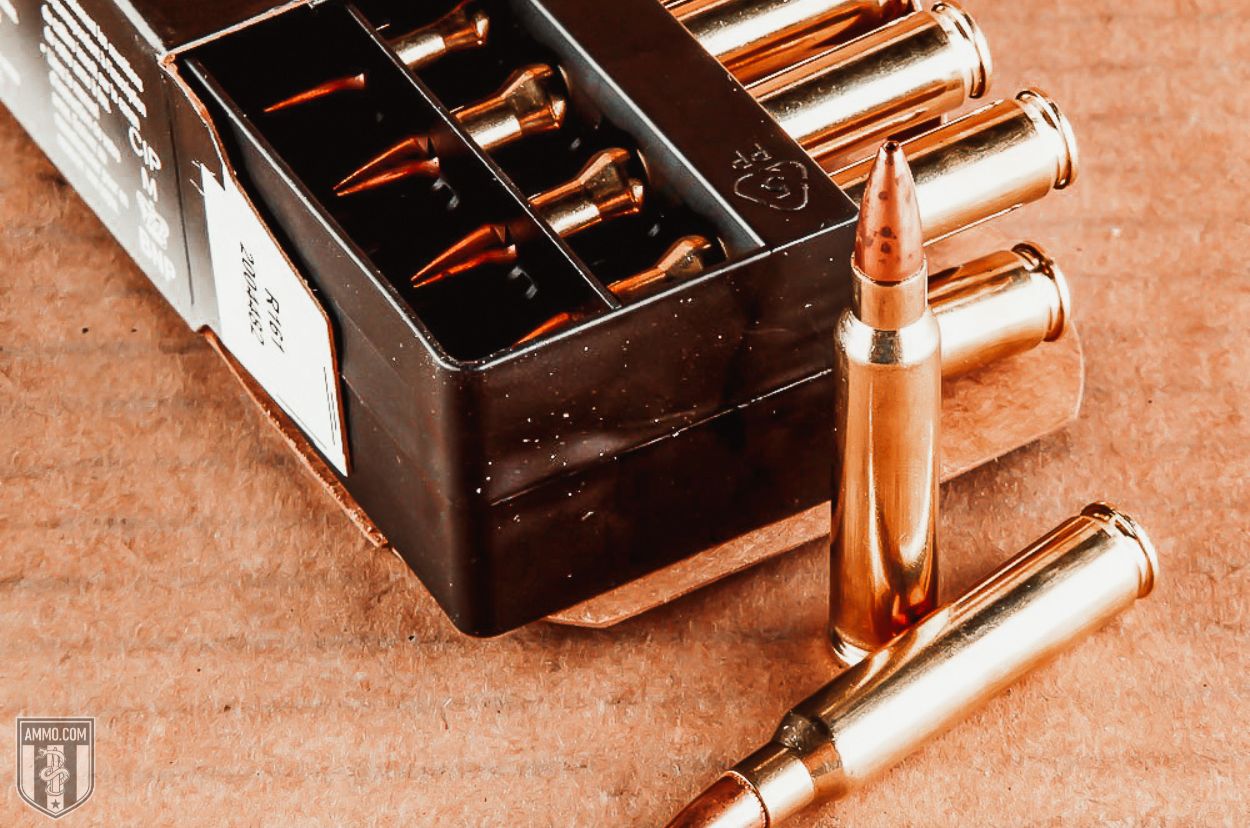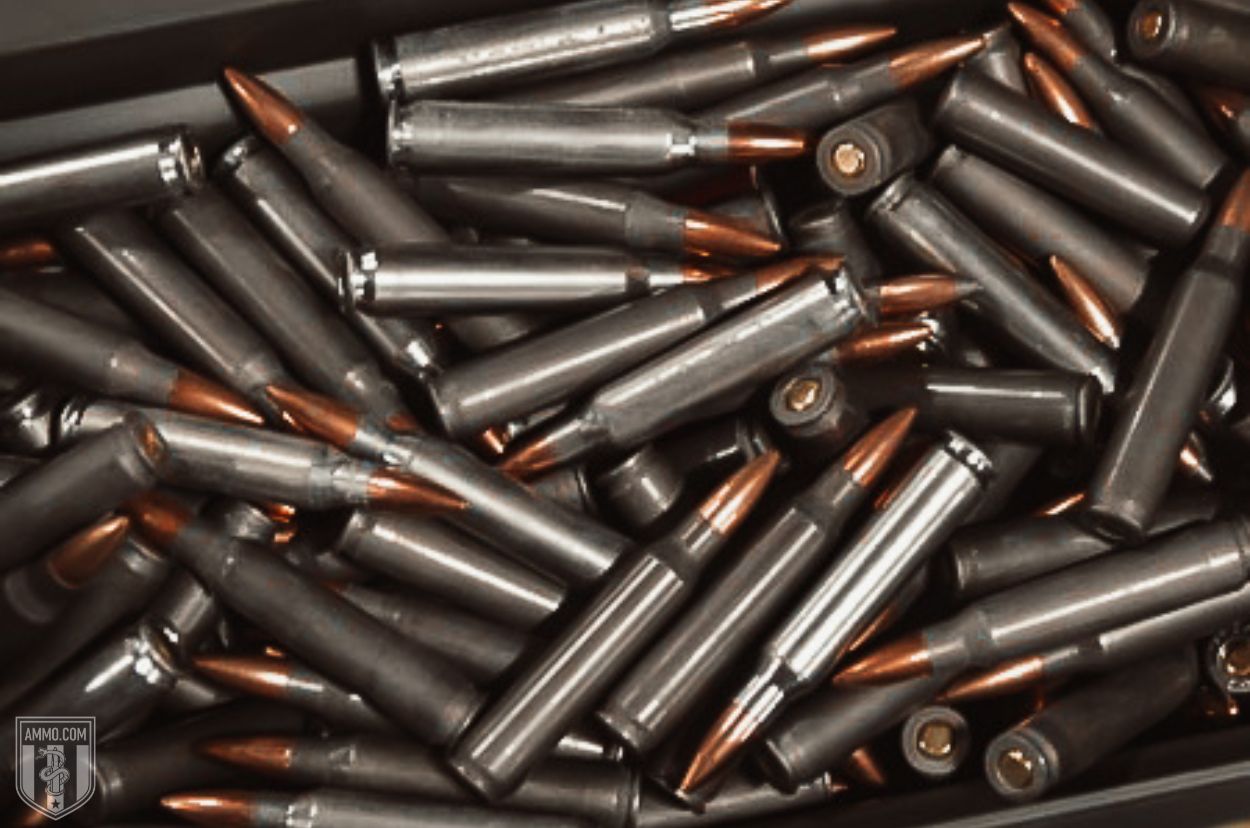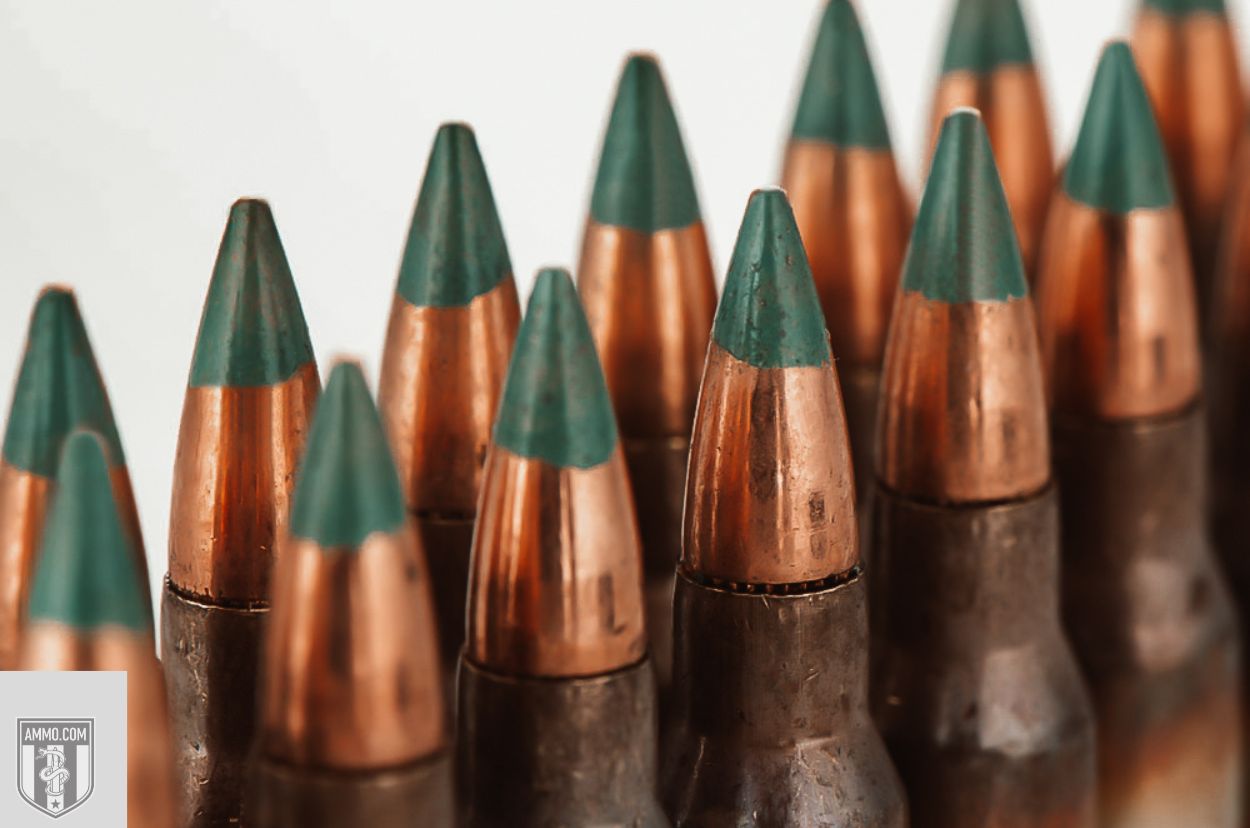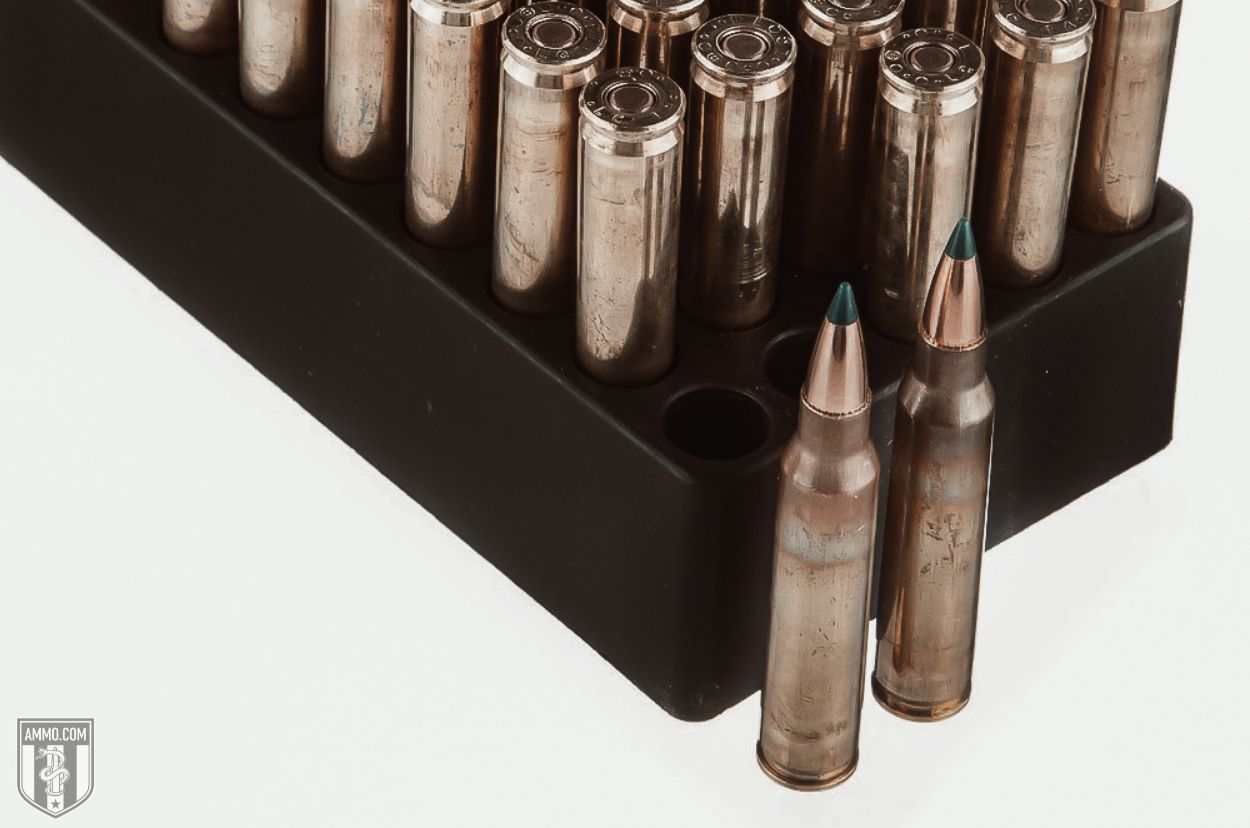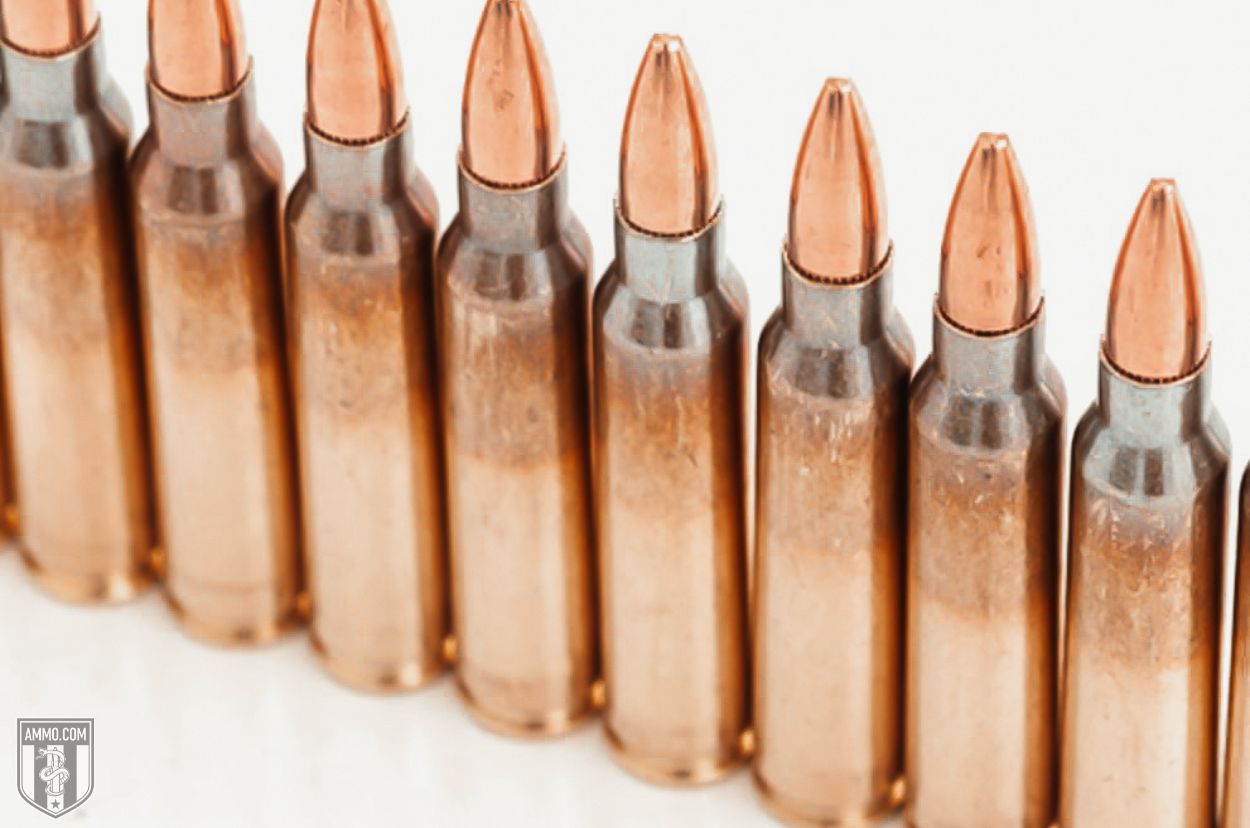M193 vs M855: Which 5.56 Round Should You Stockpile?
First Shots: M193 vs M855

First off, congratulations on the new AR-15, Ruger Mini-14, IWI Tavor, Kel-Tec RDB, FN SCAR 16S, or whatever rifle you own chambered in 5.56 NATO. Not only do you have an amazing rifle that is perfect for plinking, self-defense, and small game hunting, but you also have a tool that is capable of defending freedom.
You’ve already made the hard decision on which rifle to purchase, but now you need to know which 5.56 ammo to feed it: M193 vs M855.
If I had to make a recommendation on which ammo to stockpile, my go-to answer is “Both!”
But in general, M193 ammo is the better choice to buy in bulk as it is less expensive and has better self-defense capabilities. However, M855 green tip ammo offers better penetration and is slightly more accurate at longer distances.
If you’re ready to load your mags with either of these amazing 5.56 cartridges, make sure to check out our bulk 5.56 ammo offerings, otherwise keep reading and learn WHY M193 ammo is my first choice.
A Quick Note on Nomenclature: 223 Remington vs 5.56 NATO
Many new shooters might be confused about the differences between the 223 Remington and 5.56x45mm NATO cartridges. Some shooters will refer to them interchangeably, but this is a mistake.
Although the 223 Rem and 5.56 have identical external dimensions, the two rounds are slightly different.
You can read more about those differences here: 223 vs 5.56.
In short, a 223 Rem can safely be fired from a rifle or handgun chambered in 5.56, however the opposite is not true.
What is M193 Ammo?
The M193 cartridge was developed in the early 1960’s and was adopted for the US military’s new rifle, the M16.
Developed as the 223 Remington, the new military ammo was designed to fire a 55 grain full metal jacket (FMJ) boat tail projectile sporting a soft lead core with a muzzle velocity of 3,250 fps and a maximum of 55,000 psi chamber pressure.
Once adopted in 1964, the 223 Remington round was designated as “Cartridge, 5.56 mm ball, M193”.
The M193 saw its first action in the jungles of Vietnam and was our frontline battle cartridge until late 1980 when the military switched to M855 ammo (more on that in a moment).
The M193 cartridge was chemically sealed at the case mouth and primer pocket to ensure moisture resistance. The primer pocket was also metallically crimped in place to avoid primers backing out (and potentially striking the shooter’s eye) during fully automatic fire.
Early M16s sported a relatively slow 1:12 barrel twist rate that stabilized the 55-grain bullet extremely well. In general, the M193 round is stabilized effectively in barrels ranging between a 1:9 to a 1:12 twist rate and reaches their full muzzle velocity potential from a 20” barrel. How convenient that the original M16 used that exact barrel length…it’s almost like they planed it that way!
One of the major benefits of 55 grain projectiles are their propensity to yaw and fragment when it encounters soft tissue. This makes it a good choice for self defense, as the bullet fragments cause additional damage and limit over penetration.
However, there are some downsides to the M193.
Bullet fragmentation was not always observed on the battlefield, with many soldiers reporting their rounds merely passing through enemy combatants. As M193 fires relatively small projectiles, terminal performance will suffer without fragmentation and only small wounds will be inflicted.
Another issue was the bullet’s tendency to deflect when it encountered barriers like thick clothing or vegetation (I hear there’s a lot of that in Vietnam). Overall, M193 is not very effective at penetrating barriers and is completely ineffective against modern body armor. This isn’t a major problem when fighting unarmored NVA or VC soldiers, but modern militaries issue soldiers ballistic plates and helmets which the M193 is ill-equipped to handle.
This is where the M855 comes in.
What is M855 Ammo?
After the end of the Vietnam War, tensions between the USSR and the United States/NATO were high. A conflict seemed inevitable and in 1970 the NATO alliance signed a treaty to replace the 7.62x51mm (308 Winchester) with a smaller, low recoil cartridge.
FN Herstal took up the task of creating a new round and used the M193 as a starting point.
What they developed came to be known as the SS109 for NATO members and M855 for the US military.
The M855 round fires a 62 grain FMJ boat-tail projectile with a soft lead core and a 7 grain mild steel penetrator tip fired slightly north of 3,000 fps and a maximum of 62,366 psi (430 MPa) of chamber pressure.
The primer pocket and case mouth of M855 ammo are chemically sealed similar to M193 ammo.
The steel tip of M855 ammo was used to increase its barrier penetration potential and increase its long range capabilities.
The steel core penetrator tip was designed to punch through a 0.135” mild steel plate at 500 yards to mimic Soviet-era ballistic helmets. Furthermore, the steel core moved the center of gravity to the rear of the bullet, increasing flight stability and the potential for the steel tip to impact targets at longer ranges.
The steel tip greatly increases the length of the bullet, and thereby the ballistic coefficient. This makes the M855 slightly more accurate at longer ranges. However, faster twist rate barrels are needed to stabilize these longer bullets. Typically, a 1:7 twist rate is preferred for M855 ammo.
Often referred to as “green tip ammo”, M855 bullets have their steel tip painted green for easy identification by soldiers on the battlefield.
M855 ammo has been the primary round NATO and the US military uses in all their M4 carbines since 1980.
The M855 rounds sounds like a massive upgrade to the M193 on paper, however battlefield reports from the first Gulf War and Somalia paint a different picture.
Soldiers on the front lines often reported their M855 ammo being ineffective against enemy soldiers. This has been mostly attributed to the M855’s inability to fragment when it impacts soft targets.
Although the M855’s steel penetrator provides better penetration through barriers, it was discovered that the bullets would often pass straight through their target leaving a small wound channel. Soldiers reported enemy combatants taking multiple shots of M855 and not going down.
These lackluster terminal effects led to a renaissance of AR-15 caliber variants being developed in the early 2000’s. Eventually the military settled on the M855A1 which we will discuss in a later section.
Can Civilians Own Mil-Spec M855 and M193 Ammo?
Shooters often ask if they can own/purchase mil-spec ammo? The answer is, “Kind of”. Let me explain!
As I’m sure you can imagine, there are some strict rules around what types of military ammo civilians can own and use.
However, this doesn’t mean you can’t get your hands on some nearly identical military loads on the civilian market.
Lake City Ammunition will often release lots of surplus ammo to the civilian market that is made on the exact same assembly line as the military stuff. Federal also has their own version of M193 they sell under American Eagle XM193. The “x” front of the name merely designates that it was made for civilian consumption.
To complicate matters further, some manufactures like PMC will often sell their 5.56 ammo under the M193 and M855 name though it is not “technically” mil-spec.
M855 vs M193 Ballistics
One of the benefits of M855 ammo is its enhanced long range shooting capabilities. But is the M855 really all that superior to the M193 in terms of ballistics? Let’s take a look!
In the ballistics table below, we will compare M855 vs M193 ballistics out to 700 yards fired from a 20” barrel.

Looking at the results, we see that both rounds are nearly identical within 400 yards in terms of bullet drop. It isn’t until 500 yards and beyond that we see the M855 taking a slight lead over the M193.
At 500 yards, the M855 has experienced approximately -52” of bullet drop while the M193 has dropped -54”. Not a massive difference, but the M855 does have a flatter trajectory overall.
At 700 yards, we see a larger disparity between the two rounds as the M855 has had -140” of bullet drop compared to -156” for the M193.
The M855 also carries more kinetic energy over all ranges when compared to the M193. However, this additional kinetic energy does not necessarily translate into enhanced combat effectiveness. If you recall, the main critique of the M855 is its tendency to over penetrate and not fragment when it encounters a bad guy.
This begs the question, is M855 better than M193 from a ballistics perspective? From a numbers standpoint, yes it is. Clearly the M855 has a flatter trajectory and hits harder at range than the M193.
However, is the average shooter really going to see any difference between the two? I’ll go out on a limb here and say that they probably won’t. The majority of shooters (myself included) will spend most of their time shooting between 100 and 500 yards, and at these distances both rounds are relatively identical in terms of performance.
M193 vs M855 for Self-Defense
To put it bluntly, neither M193 nor M855 are ideal for self-defense.
In general, it is ill-advisable to use full metal jacket (FMJ) ammo for home defense due to over penetration and poor terminal ballistics.
Why then does the US military use this ammo? Because they have to.
Militaries are bound by restrictive agreements like the Hague Convention that limit the types of ammo soldiers can use in warfare. To give you the Cliff Notes version, this means soldiers are required to use non-expanding ammunition in battle.
Uncle Sam might be bound by these agreements, but you as a civilian are not. This means that you can use 5.56 ammo loaded with expanding bullets that greatly improve terminal ballistics and are specifically designed for self-defense.
To read more about our top 5.56 NATO ammo picks for home defense, check out this article: The Best 5.56 Ammo for Home Defense.
However, if you only have M855 or M193 at your disposal for home defense, then M193 is the better choice. As the round has a higher potential to cavitate and fragment, this makes it a better choice when barrier penetration is not needed.
Can M855 Ammo defeat body armor? Is it Legal?
One of the most frequently asked questions here at Ammo.com is whether M855 ammo is armor piercing (AP) or not. The simple answer is: no.
Although M855 ammo sounds like it should be armor piercing with its ominous green tip and steel penetrator insert, it is actually not designed to penetrate modern body armor.
It was developed primarily to be more efficient at barrier penetration than M193 and to defeat Soviet-era steel ballistic helmets. In general, M855 accomplished those goals, although there are some reports about the round’s inability to penetrate auto glass.
Regardless, this means that M855 is completely legal for civilians to own as it is not an armor piercing round.
However, the story doesn’t quite end right there.
One major issue with M855 is that it is incredibly efficient at damaging steel targets. Although the mild steel core might not be able to punch all the way through AR500 steel targets, it will create some nasty craters in them. This can lead to bullet fragments flying back at your face instead of towards the ground, which is a dangerous situation to say the least.
To make matters worse for M855, many indoor (and some outdoor) ranges prohibit their use. This is because of M855’s ability to damage many bullet catchment systems these ranges use, causing the company to incur massive repair bills.
As such, the use of green tip M855 is often banned at indoor ranges, limiting where you can shoot it.
What are Some Different Types of 5.56 Ammo
Although M193 and M855 are the two types of NATO ammunition most readily available to civilians like you and me, there are several other variants of 5.56 NATO you might run into out in the wild.
M196 – These are 54 grain tracer rounds that will have either a red or orange tip. They are made to mimic M193 ballistics.
M200 – These blanks are crimped at the case mouth and sealed with violet lacquer. They are primarily used for live-fire military training exercises.
M855A1 – M855A1 is the next generation of M855 ammunition. Developed to be “greener” than traditional lead core bullets, M855A1 fires a 62 grain FMJ bullet with a solid copper core and steel penetrator tip extending past the copper jacket and has been in service since 2010. This is the current duty ammo for the US Army.
M856 – These are 63.7 grain tracer cartridges with an orange tip. They are often paired with M855 rounds in belted machine guns but lack a steel penetrator insert.
MK 262 – The MK 262 round was the first attempt to improve on the M855 design. It was designed to fire a 77 gr OTM (open tip match) bullet designed for the Mk 12 SPR (squad precision rifle). Special Forces became fond of the MK 262 as it offered better terminal ballistics in the M4 carbines than what was observed with the SS109 NATO rounds. However, the Mk 262 was not adopted for widespread use due to the increased cost of heavier OTM bullets.
MK 318 – The MK 318 Mod 0 was developed and adopted by the US Marine Corps due to delivery delays in M855A1. Firing a 62 grain OTM bullet, The MK 318 is designed to facilitate soft tissue damage and a solid brass penetrator base for added barrier penetration. This allows it to be employed against targets with or without body armor. Furthermore, the Mk 318 will fragment upon impact and is not dependent bullet yaw (tumbling) like the M193 and M855.
M855 vs M193: Which Is Best for You?
Selecting the best ammo for your AR-15 rifle really comes down to understanding what you want your rifle for.
In general, most shooters should stock up on M193 ammo. Although M193 is an older design, it just works. You can use it at virtually any rifle range, it’s inexpensive, plentiful, and performs well in most rifles.
M855 ammo is great for barrier penetration and long-range target shooting. Although this stuff won’t punch through Level IV ballistic plates, it’s always good to have some on hand for Red Dawn if you know what I mean!
Although M855 is banned at many shooting ranges, some manufacturers like Hornady and Winchester offer 62 grain factory loads without the steel penetrator tip. This allows you to have all the benefits of shooting a heavier bullet without the target-destroying tendencies of classic M855 ammo.
Honestly, it’s good to have a stockpile of both types of ammo on hand for any liberty-infringement or SHTF situation you might encounter.
If you’re looking to increase your 5.56 ammo reserves, make sure you check out our 5.56 bulk ammo page for all the best deals on 5.56 NATO ammo we have in stock. No matter which military load you choose, make sure to stack it to the rafters and I’ll see you out on the range!
Ammo Comparisons
- .308 vs 5.56
- 6.5 Creedmoor vs .308
- .300 Blackout vs .308
- .300 Win Mag vs .308
- .243 vs .308
- .308 vs .30-06
- 7mm-08 vs .308
- .270 vs .308
- 7.62x39 vs .308
- .223 vs .308
- .338 Lapua vs .308
- .380 ACP vs 9mm
- .223 vs 5.56
- .300 Blackout vs 5.56
- 9mm vs 45 ACP
- 9mm vs 40 S&W
- .357 SIG vs 9mm
- 10mm vs 9mm
- 9mm vs 9mm Luger
- .243 vs .270
- .300 Win Mag vs .30-06
- .270 vs .30-06
- .40 vs .45
- 38 Special vs 357
- 9mm vs 40 vs 45
- 5.56 vs 7.62x39
- 338 Lapua vs .30-06
- .30-30 vs .30-06
- 300 PRC vs 338 Lapua
- .30-06 vs 7mm
- 300 Win Mag vs 338 Lapua
- 300 PRC vs 300 Win Mag
- 300 WSM vs 300 Win Mag
- 338 Win Mag vs 338 Lapua
- 12 Gauge vs 20 Gauge
- 10mm vs 357 Mag
- .30-30 vs 7.62x39
- 224 Valkyrie vs 22-250
- 17 HMR vs 22 Mag
- 7.62x39 vs .300 Blackout
- 45 ACP vs 45 Auto
- 45-70 vs 30-30
- 300 Blackout vs 223
- 357 Magnum vs 9mm
- 350 Legend vs 300 Blackout
- 224 Valkyrie vs 223
- 45 ACP vs 38 Super
- 6.5 Grendel vs .308
- 17 HMR vs 22 LR
- 10 Gauge vs 12 Gauge
- 22-250 vs 223
- 45 Colt vs 45 ACP
- 350 Legend vs 30-30
- 5.7x28 vs 223
- 5.7 vs 9mm
- 5.56 vs 5.7
- 22 vs 9mm
- Buckshot vs Birdshot
- 450 Bushmaster vs 308
- 450 Bushmaster vs 223
- Buckshot vs Slug
- 6.5 Grendel vs 5.56 vs 223
- 6mm ARC vs 6.5 Grendel
- 44 vs 45
- 458 SOCOM vs 5.56
- 357 vs 44
- 32 ACP vs 380
- 300 Win Mag vs 338 Win Mag vs 338 Lapua Mag
- 450 Bushmaster vs 458 SOCOM vs 50 Beowulf
- 6mm Creedmoor vs 6.5 Creedmoor
- TMJ vs FMJ
- 44 Special Vs 44 Magnum
- 45 90 vs 45 70
- 6.8 Western vs 6.8 SPC
- 50 Beowulf vs 50 BMG
- 26 Nosler vs 6.5 PRC
- 28 Gauge vs 410
- 6.8 SPC vs 5.56
- 6.8 SPC vs 6.5 Grendel
- 6.8 Western vs 7mm Rem Mag vs .28 Nosler
- 6.8 Western vs 6.5 Creedmoor
- 22 Hornet vs 223
- 6.8 Western vs 6.5 PRC
- .410 vs 12 Gauge
- .410 vs 20 Gauge
- 22 LR vs 22 Mag
- 6mm ARC vs 243
- 7mm-08 vs 270
- 243 vs 6.5 Creedmoor
- Nickel vs Brass Casing
- 204 Ruger vs 223
- 50 Beowulf vs 5.56
- 260 Remington vs 6.5 Creedmoor
- 6mm Remington vs 243
- 28 Nosler vs 300 PRC
- 50 Beowulf vs 50 AE
- 22 Nosler vs 22-250
- 450 Marlin vs 45-70
- 300 Win Mag vs 300 Norma
- 458 SOCOM vs 300 Blackout
- 38-55 vs 45-70
- 22 Hornet vs 22 LR
- 300 Norma vs 338 Lapua
- 338 Lapua vs 50 BMG
- 28 Nosler vs 300 Win Mag
- 28 Nosler vs 6.5 Creedmoor
- 204 vs 22-250
- 458 SOCOM vs 45 70
- 44 40 vs 45 70
- 6.8 SPC vs 6.5 Creedmoor
- 450 Bushmaster vs 30-06
- 7mm Rem Mag vs 300 Win Mag
- 30 Carbine vs 223
- 25-06 vs 30-06
- 26 Nosler vs 28 Nosler
- 16ga vs 12ga
- 30 06 vs 7.62 x54R
- 9mm Makarov vs 9mm Luger
- 350 Legend vs 223
- 30 Carbine vs 5.56
- 6.5x55 vs 6.5 Creedmoor
- 6.5 Creedmoor vs 270 vs 25-06
- M193 vs M855
- 450 Bushmaster vs 458 SOCOM
- 6.5 Grendel vs 6.5 Creedmoor
- 350 Legend vs 5.56
- .277 Fury vs 6.8 SPC
- 277 Fury vs 300 Win Mag
- 10mm vs .45 ACP
- 277 Fury vs 223
- 6.8 SPC vs 300 Blackout
- 6.5 PRC vs 6.5 Creedmoor
- 277 Fury vs 308
- 277 Fury vs 6.5 Creedmoor
- 350 Legend vs 450 Bushmaster
- 277 Fury Vs 5.56 NATO
- 10mm vs 40S&W
- 32 ACP vs 9mm
- 32 Special vs 9mm
- 8.6 Blackout vs 300 Blackout
- 30 Super Carry vs. 9mm
- 5.56 vs 9mm
- .50 Action Express vs 9mm
- 7.62x25 vs. 9mm
- 10mm vs 44 Magnum
- 300 Blackout vs 300 Win Mag
- 6.5 Grendel vs 300 Blackout
- 460 Rowland vs 10mm
- 300 RUM vs 300 PRC
- 300 Norma vs 300 PRC
- 45 GAP vs 45 ACP
- 7mm PRC vs 300 Win Mag
- 300 PRC vs 6.5 Creedmoor
- 300 PRC vs 308
- 357 SIG vs 357 Mag
- 7.62x39 vs 7.62x51
- 243 Win vs 223 Rem
